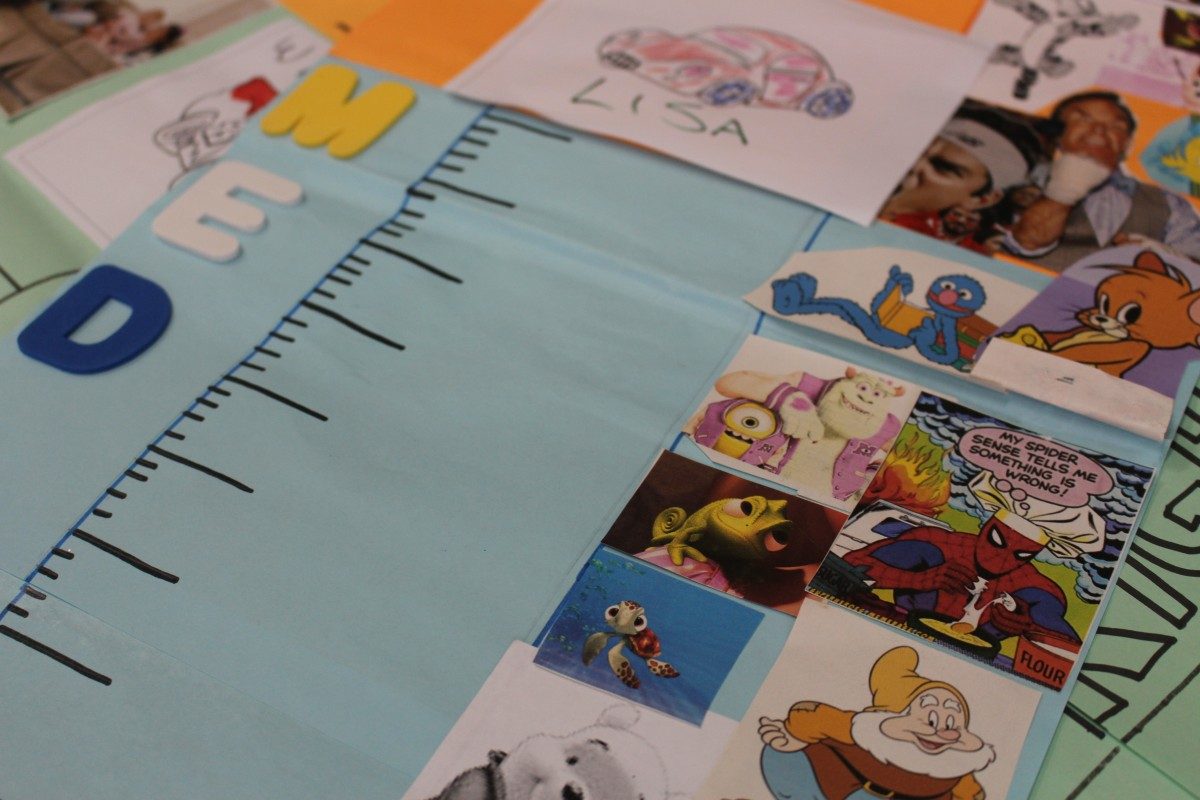
Handcrafts and graphic projects help children relax, self-regulate
How does your engine run?
A program teaching children with sensory processing issues how to self-regulate has been adapted by the department of occupational therapy and Bridgecare Clinic for immigrant and refugee children who have experienced trauma.
“How Does Your Engine Run?” was originally developed with the goal of teaching children how to regulate their “engine”, which represents their mind and body. This was the first time the week-long group was used to teach immigrant and refugee children how to self-regulate and reach the optimal level for learning and interacting with others on a daily basis.
Children in the group ranged from ages five to 15. “Normally we would separate the kids by age and keep the parents separate. But because of traumas they may have experienced in the past we don’t want to separate them,” says Lisa Diamond-Burchuk, Instructor, Department of Occupational Therapy, College of Rehabilitation Sciences. “If the parents are there, learning with them it also helps them carry on the self-regulating habits at home.”
Diamond-Burchuk partnered with Melody Driedger, marriage and family therapist and Sheri Larsen-Celhar, nurse practitioner at Bridgecare Clinic, to adapt the program for children who had low or no understanding of English. “Occupational therapy has the skills to fill gaps in service delivery that are new and exciting. It was a huge privilege to have been able to see our expanding reach in action,” says Amanda Ameis, a Rady Faculty of Health Sciences OT student who will graduate this October.
She hopes that involvement with “How Does Your Engine Run?” will count towards student field work in the coming years. “Being able to participate in many stages of the group – from planning, preparing materials, facilitating and debriefing – gave me a rare and valuable opportunity to experience a brand new way of supporting newcomers and their families,” says Ameis.
Early in the week, the children created thermometer collages to help visualize how they feel when their engines are low (demonstrated by photos of people yawning); when their engines are medium (photos of happy kids and people reading); and lastly, when their engines are high (cartoon characters jumping and running.)
The optimal engine level for learning and interacting with others is somewhere in the medium zone. But how do you get there? Making bracelets, colouring, building fidget toys, lying on your tummy, these are all things the children learn to do to self-regulate.
“I find making bracelets relaxing, but some people start weaving and are like ‘Ahh! This isn’t calming at all,’” says Driedger. The group helps children figure out what works for them. If a child is too excitable to sit down and colour, maybe playing with a fidget toy would work better for them.
“More projects like this would be beneficial for BridgeCare Clinic clients. It is my hope that this pilot program will evolve into a permanent program that I may be able to refer my clients and their children to,” says Larsen-Celhar. She and Driedger work with the parents of the children involved, providing them with medical care and counselling.
All the facilitators involved said the interdisciplinary aspect of the group, occupational therapy, nursing and family therapy, was extremely beneficial not only to the participants but also for them professionally.
“Knowing that all involved were able to take something away and could see how it would apply to their lives or professional practice demonstrated to me how interwoven client-centred care and interprofessional practice are. I am very grateful to have had the opportunity to participate and am very excited to see how occupational therapy becomes more established in serving the newcomer and refugee communities,” says Ameis.







This is so encouraging! It’s great to see a new resource adapted for the immigrant and refugee communities.